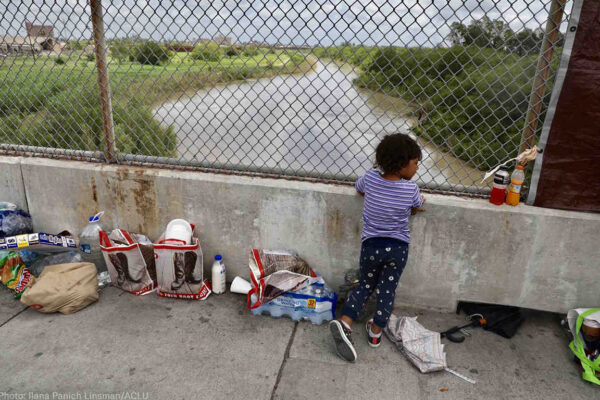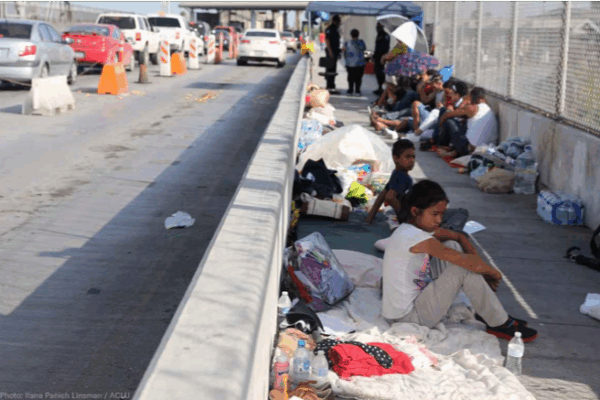This piece originally appeared at The New York Times.
Every day, the same scene plays out in the Mexican border city of Ciudad Juárez. Mixed into the flow of students, commuters and travelers are asylum-seeking families, arriving at their final destination, the entrance to the United States port of entry.
The families drop the required 4 pesos into the turnstile to begin their walk up the international bridge that arches over the Rio Grande and connects this part of Mexico to the United States. Yet when they reach the halfway point, demarcated by orange cones, Customs and Border Protection officers are waiting to turn them away from seeking safety in the United States — a right granted to them under American and international law.
Instead, these asylum-seeking families are provided with the same explanation: “We are full.”
Conversations surrounding President Trump’s focus on spending billions on a border wall have overshadowed border realities. For the past two years, as the number of asylum-seeking families and children has increased, the administration has ushered in a range of additional restrictive border policies. United States government officials have told migrants to go to ports of entry rather than crossing the border without authorization. However, simultaneously, they have imposed other policies that reject asylum seekers trying to do just that.
In July, a family of five arrived (navigating their way through Mexico with the help of smugglers) at the Eagle Pass-Piedras Negras border crossing to apply for asylum. The parents and their children — ages 12, 6, and 3 — had fled El Salvador after receiving targeted threats of violence from Barrio 18, a major gang in Central America.
The family approached border officers to assert their right to ask for asylum; they were also seeking help for a son who no longer had medicine for his chronic heart condition. In response, a border officer noted that he was not a doctor, physically pushed the family back across the international line into Mexico, and told them to return to Piedras Negras and the local migrant shelter there.
In the shelter, the family put their names on an informal waiting list for their chance to seek asylum again. However, their smugglers learned they had not yet entered the United States and began demanding more money, promising to infiltrate the shelter and kill the family if they did not send additional payments. Several days later, while the family walked to a convenience store, a white van screeched to a halt and armed men forced the family into the vehicle.
Click here to continue reading at The New York Times.



